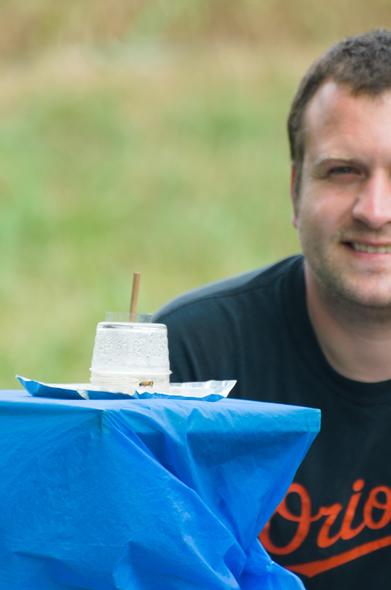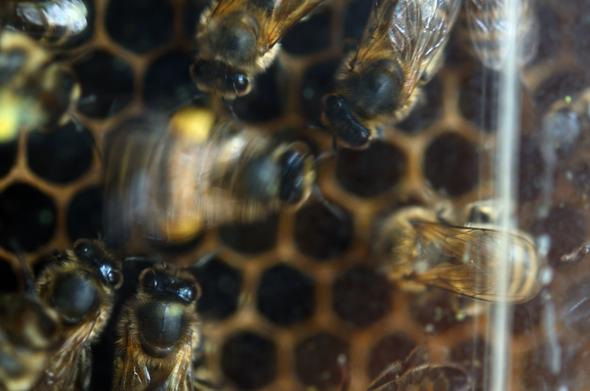@albertcardona *we* still decode dances visually from observation hives for our work. But I have been thinking about how we could change that. All I need is a student and a bit of money ... And maybe some talented math person to help me out.
@futurebird @freequaybuoy that looks like a graph showing the insect declines in the 20th and 21st century ...
@celestialfin @futurebird @mikeolson here is a review article on individuality ("behavioral syndromes") in social insects: https://doi.org/10.1111/brv.12042
It probably does not answer the question of free will ...
Population genetics of bedbugs shows that their population has tracked human expansion, with a major surge when humans started forming cities.
1- This is cool if true, but also 2- I'd like to remind everyone who worries that preprints lead journalists to comment on work that isn't yet peer-reviewed that they've been doing it forever based on conference presentations, as here:
"The findings were presented on Wednesday at the joint 188th Meeting of the Acoustical Society of America and 25th International Congress on Acoustics in New Orleans."
(not a plant biology conference I notice)
https://www.theguardian.com/environment/2025/may/21/plants-produce-more-nectar-when-they-hear-bees-buzzing-scientists-find
@david_chisnall the only time that ever happened to me was in Brighton, and the forecast was from the BBC. I thought that this was a feature of England rather than of any app ...
@wolfgangcramer I love that bit, especially when the leaves turn yellow and red in autumn.
@ojala I am just through grading and feel that quite a bit.
That's pretty decisive, though I am intrigued by the vote for Fedora. Maybe I will give it a spin in a VM ...
@lecroix74 I see these strong opinions regarding snap. I have had the odd problem with rights, but other than that they seem to work OK. Why are you snap averse?
@milvus oh, I did not know that. Here I am, compiling stuff from scratch 😂
@defuneste thanks for the link, I will definitely have a look. I do like my Emacs tinkering for sure ... And stability for teaching may just trump all other needs.
@defuneste I like to tinker and am dearly tempted, but I really don't have time for tinkering. So, in essence I am looking for everyone to tell me not to go the Arch way 😥😂
This might represent the best of both worlds, allowing them to exploit the highest quality resources, possibly near where other colonies are also foraging, but with enough partitioning to minimize competition.
I want to thank both former students for their hard work and dedication to get these papers over the finish line.
5/n
Second, Dr. Brad Ohlinger who was co-advised by Dr. Couvillon and myself, used our extensive data set of decoded waggle dances to answer a question that we are often asked (http://dx.doi.org/10.1002/ece3.71401): how do bees from different colonies in an apiary behave when they are foraging – do they converge on the same high quality resources or do they partition the landscape to avoid each other? Brad analyzed over 8000 waggle dances from 9 colonies to discover that bees partition, although locally. 4/n
Since the generalist honey bee is suspected to be a bioindicator for other pollinators, we think that other bees may be impacted in the area as well. While the result may seem almost trivial (bees can’t forage on construction sites), the paper importantly demonstrates the usefulness of waggle dance prediction as a relatively low-labor method to study impacts of rapidly changing environments on pollinators. 3/n
First, embedded in Dr. Maggie Couvillon’s (@freelyflyingbees.bsky.social) and my Bees-As-Bioindicators project, Dr. Rob Ostrom has investigated how a new housing development on prime forging habitat impacts honey bees (https://doi.org/10.1242/bio.061807). He found that bees faced increased foraging costs because their foraging distances doubled on average after the loss of prime habitat. 2/n
The past few weeks have been a blur with the end of classes for the year, but also the publishing of 2 new #HoneyBee #WaggleDance manuscripts from two former PhD students. These papers show the usefulness of waggle dance decoding both as an applied instrument as well as a tool for exciting basic research. Thread 1/n
@anon_opin Teigwaren sind Teigwaren, weil Teigwaren Teig waren. OK, not 100% the same ...


